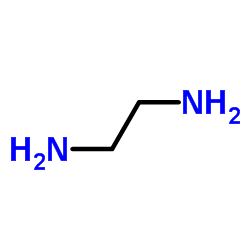317-34-0
| Name | Aminophylline |
|---|---|
| Synonyms |
1,3-Dimethyl-3,7-dihydro-1H-purin-2,6-dion-ethan-1,2-diamin(2:1)
1,3-diméthyl-3,7-dihydro-1H-purine-2,6-dione - éthane-1,2-diamine (2:1) Cidophylline Theophylline ethylenediamine Aminophylline Etilen-Xantisan lasodex 1H-Purine-2,6-dione, 3,7-dihydro-1,3-dimethyl-, compd. with 1,2-ethanediamine (2:1) aminodur euufilin Novophyllin Variaphylline LA cariomin EINECS 206-264-5 tefamin 1,3-Dimethyl-3,7-dihydro-1H-purine-2,6-dione - 1,2-ethanediamine (2:1) th/100 CaRine Ethylenediamine compd. with Theophylline (1:2) 1,3-Dimethyl-3,7-dihydro-1H-purine-2,6-dione - ethane-1,2-diamine (2:1) MFCD00013221 1H-purine-2,6-dione, 3,9-dihydro-1,3-dimethyl-, compd. with 1,2-ethanediamine (2:1) Pecram Novphyllin dobo carena theomin eufilina 1,3-Dimethyl-3,9-dihydro-1H-purine-2,6-dione - ethane-1,2-diamine (2:1) Aminophylline ethylenediamine 1,2-Ethanediamine compd. with 3,7-Dihydro-1,3-dimethyl-1H-purine-2,6-dione (1:2) |
| Description | Aminophylline is a competitive nonselective phosphodiesterase inhibitor that is used to treat airway obstruction from asthma or COPD.Target: PhosphodiesteraseAminophylline is a compound of the bronchodilator theophylline with ethylenediamine in 2:1 ratio. The ethylenediamine improves solubility, and the aminophylline is usually found as a dihydrate. Aminophylline is less potent and shorter-acting than theophylline. Its most common use is in the treatment of airway obstruction from asthma or COPD. It is used off-label as a reversal agent during nuclear stress testing. Aminophylline is a nonselective adenosine receptor antagonist and phosphodiesterase inhibitor.Adenosine is an endogenous extracellular messenger that can regulate myocardial oxygen needs. It acts through cellular surface receptors which effect intracellular signalling pathways to increase coronary artery blood flow, slow heart rate, block atrioventricular node conduction, suppress cardiac automaticity, and decrease β-adrenergic effects on contractility. Adenosine also antagonizes chronotropic and ionotropic effects of circulating catecholamines. Overall, adenosine decreases the heart's rate and force of contraction, which increases blood supply to the cardiac muscle. Given specific circumstances this mechanism (which is intended to protect the heart) may cause atropine-resistant refractory bradyasystole. Adenosine's effects are concentration-dependent. Adenosine's receptors are competitively antagonized by methylxanthines such as aminophylline. Aminophylline competitively antagonizes the cardiac actions of adenosine at the cell surface receptors. Thus, it increases heart rate and contractility. |
|---|---|
| Related Catalog | |
| References |
[1]. Essayan DM. Cyclic nucleotide phosphodiesterases. J Allergy Clin Immunol. 2001 Nov;108(5):671-80. |
| Boiling Point | 454.1ºC at 760mmHg |
|---|---|
| Melting Point | 269-270 °C |
| Molecular Formula | C16H24N10O4 |
| Molecular Weight | 420.426 |
| Exact Mass | 420.198212 |
| PSA | 197.40000 |
| Storage condition | −20°C |
| Water Solubility | soluble |
CHEMICAL IDENTIFICATION
HEALTH HAZARD DATAACUTE TOXICITY DATA
MUTATION DATA
|
| Symbol |

GHS06 |
|---|---|
| Signal Word | Danger |
| Hazard Statements | H301 |
| Precautionary Statements | P301 + P310 |
| Personal Protective Equipment | dust mask type N95 (US);Eyeshields;Faceshields;Gloves |
| Hazard Codes | C:Corrosive |
| Risk Phrases | R22;R34;R42/43 |
| Safety Phrases | S45-S36/37/39-S26-S23 |
| RIDADR | UN 2811 6.1/PG 3 |
| WGK Germany | 3 |
| RTECS | XH5600000 |
| Packaging Group | III |
| Hazard Class | 6.1(b) |
| HS Code | 2939590000 |
|
~% 
317-34-0 |
| Literature: Chemical and Pharmaceutical Bulletin, , vol. 30, # 5 p. 1900 - 1902 |
| HS Code | 2933990090 |
|---|---|
| Summary | 2933990090. heterocyclic compounds with nitrogen hetero-atom(s) only. VAT:17.0%. Tax rebate rate:13.0%. . MFN tariff:6.5%. General tariff:20.0% |


